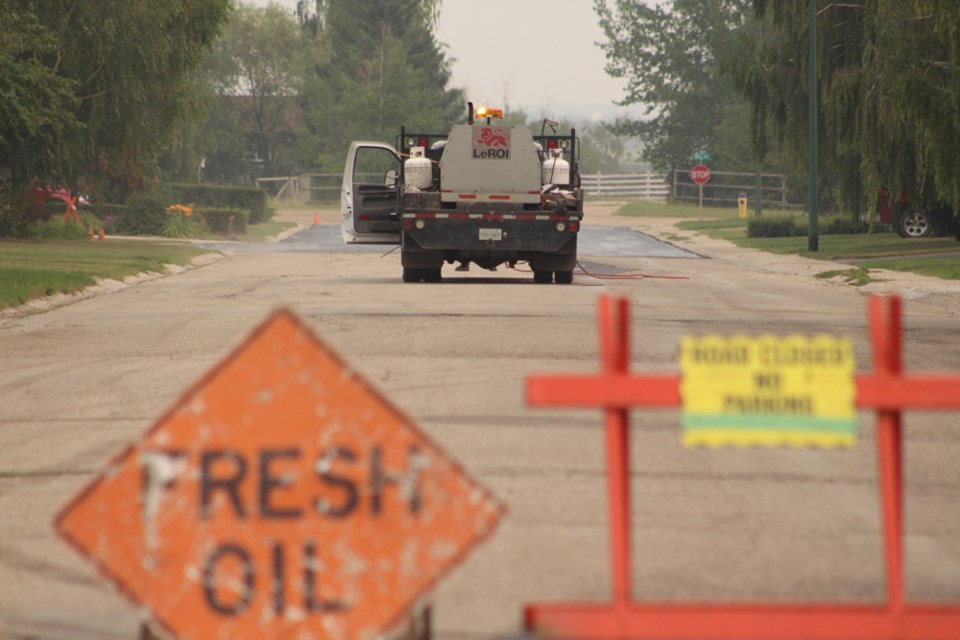Roadways across the city continue to need work, and with budget limitations, the city is doing what they can to fix them.
Over the past week, the city applied a slurry seal and crack sealing surface to parts of the city on Laskin Cres., 2nd Ave., and 3rd St.
“These roads are not due for water main replacement or resurfacing in terms of the list of priorities for – they’re not even in the top 10 years – and so to extend their life, because they were looking to be in a little bit of rough shape, they put sand seal on them,” said Public Works Manager Patricia Lung.
The seal was expected to extend the life of the roadway by five years, says Lung.
“The roads at the moment are in acceptable shape to make another five years, this would extend it for another five years so we would have a decent life on the roads. It adds to the extension of already where we think the roads are going to be. Not just that it’s five years from today.”
The decision was made to go this route instead of just doing the replacement now, because the city did not see it as a priority at this time, said Lung.
“We monitor the breaks that we have along our piping system underground and then it’s ranked in the order of priority by the number of breaks that we are starting to see for replacement. And these areas don’t have breaks of significance, they have not made the list. There’s other areas in town that are breaking more frequently.”
Residents in those areas saw road closures for approximately four days, which Lung says is an important part of the process.
“We want as clean a surface as possible to maximize the adherence to the existing road surface.”
The road was closed the evening before work began so the streets could be swept, and were kept closed for the three days following, allowing for two days of work and a third to let the substance cure.
Allowing the streets to cure was also an important part of the process, says Lung.
“As people see it, it’s kind of a tar type material, it’s an oily type material so driving on it right fresh there’s the potential of having it stick to vehicles.”



